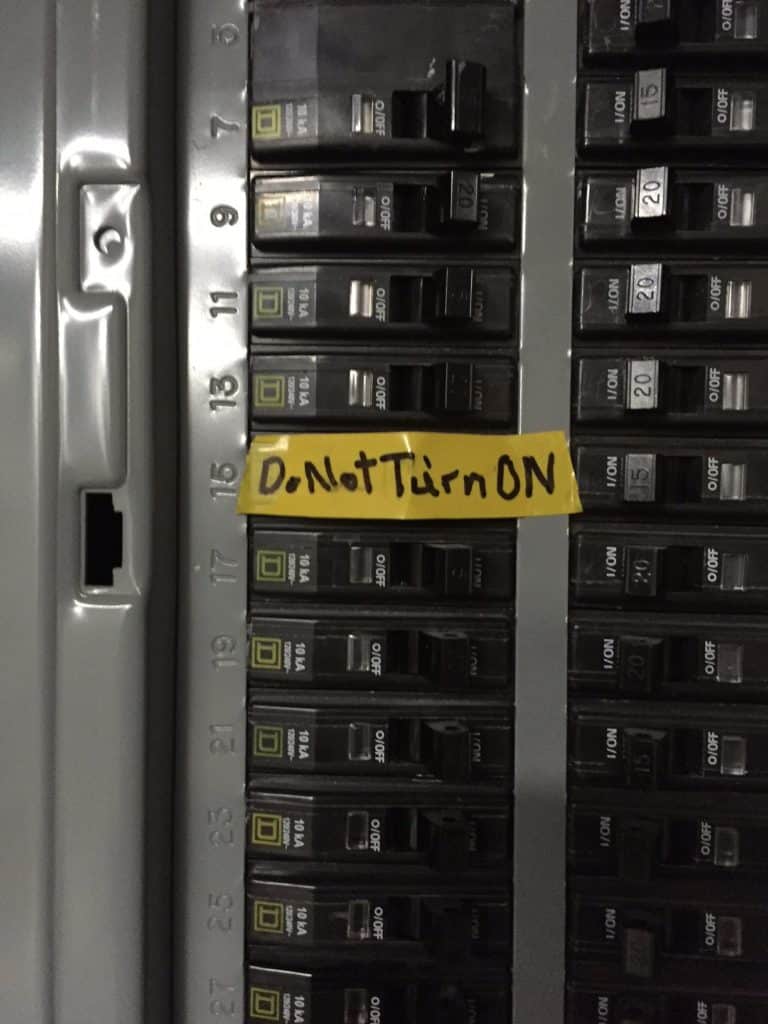How many of you have heard of lockout-tagout? Lockout-tagout (LOTO) entails removing all “potential energy sources” on anything you may be working on. In this article, you share some of the hazards you can face doing home projects and provide some practical lockout examples to help keep you safe. This is something that can save you a lot of pain, agony or worse!
If you’ve been to our “About Us” page, you’ll have seen that I have worked in an industrial setting for the bulk of my adult life. The one main topic that is stressed the most in almost every industrial business today is safety! Lockout-tagout is among the top safety procedures and best safe work practices that can save lives. You face many of the same hazards when working on home projects.
That is why safety is such a big part of any project my wife and I take on. It is also why I wrote the “Success Begins with Personal Protective Equipment (PPE)” article. Safety truly is one of the most important items we address on any project we do. Lockout-tagout dovetails right along with the use of PPE. These two items, along with careful planning, having the proper tools, and using them correctly, can help prevent most home project related injuries. For us completing a project successfully includes completing it without any injuries.
In this article, we will be providing you with a few links to some products for pricing and informational purposes. We are required to let you know some of these links are “affiliate links”. This means if you click on a link and make a purchase, we could make a small commission, at no extra cost to you. This helps offset the cost of maintaining our website. Now, let’s get started.
What is Lockout Tagout
Table of Contents
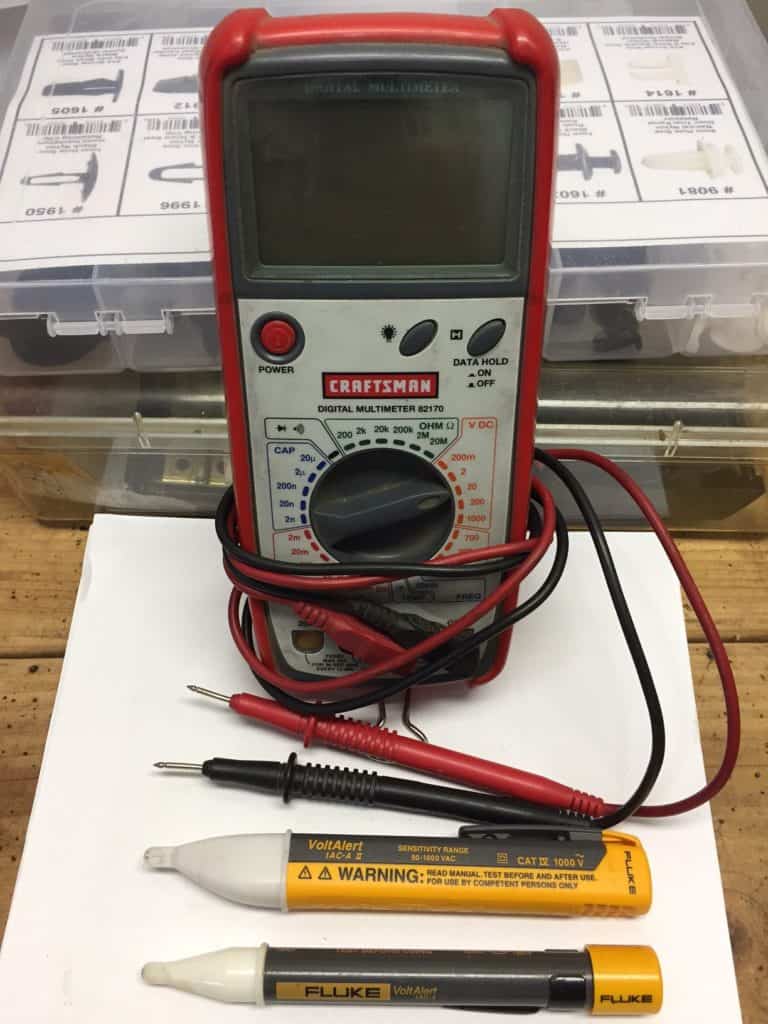
So what is LOTO? One of the simplest examples is changing out a light switch. Before you remove the switch cover, you need to find the electrical circuit breaker that feeds that switch and turn it off. You should also put a tag (or a locking device in the industrial world) on the breaker, so others know you are working on that circuit and not to turn it on. You should also verify there is no power on the circuit with a voltage meter or voltage tester before you begin replacing the switch. This is called Lockout-Tagout-Try (LOTOT). We’ll stick to LOTO for this article, but the “Try” is always highly recommended.
Plug In Cords
Another simple form of LOTO is when you are working on an appliance with a plug-in cord. Make sure you have the plugin “under your control”. Keep the plugin end with you. If that is not possible, there are “plug lock” device that allows you to secure the plug so someone cannot plug it in while you’re working on it. Just think if you were working on your outdoor Christmas light display and someone plugged it in… break out the first aid kit!
Vehicle Battery
Along the same idea is when you are doing any car repairs; always disconnect one of your battery leads. This does two things. First, if fluids are drained, or something is partially disassembled, it prevents someone from starting the vehicle and driving off. This could damage the engine or, worse yet, cause the driver to lose control of the vehicle and crash. Secondly, it prevents the engine from being started while you are working on it.
This is especially important when working on a vehicle with a remote start, which is quite common now. I recently installed the serpentine belt and pulleys in my daughter’s Ford Taurus and if the engine would have been started while I was removing or install the belt, that would almost assuredly result in a trip to the emergency room.
Stored Pressure
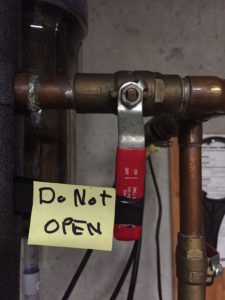
We’ve talked a little about electricity, but what are some of the other forms of “potential energy sources”? After electricity, stored pressure is one of the most common. Pressure can be stored in many different systems. There’s air, water, gas (propane), hydraulic (oil)… just to name a few. Always make sure you turn the energy source off that is generating pressure and do your LOTO on this device.
Frequently this is an electrical pump, such as your water well or the motor on your air compressor. Locking out the electrical is only the first part of the process. Don’t forget the stored pressure in the water or air tanks and all the piping that is connected to them. That pressure needs to be bled off before any work can be done on those systems.
If you have a valve in place that can isolate the section of the system you’re working on, you can close it. But don’t forget to lock the valve out. And you must still bleed the pressure off before beginning your project.
Stored Mechanical Energy
The next form of “potential energy sources” I’d like to mention is the stored mechanical energy in springs. Springs are used in so many items around the home and garage, it’s impossible to name them all. Your roll-up garage door has one of the potentially most dangerous ones around your home. Even a simply door closure on you storm door has enough energy to cause some serious injuries to your hands and fingers.
In some cases, there may not be a means for a normal Lockout-Tagout. However, being aware of the hazard and taking all the necessary precautions are a great first step. For example, if your working on a garage door that’s only being held up by the garage door torsion spring, block the door up with a ladder or put some “C” clamps on the rail to hold it up. In this particular example, you are dealing with the potential energy in the wound door spring and the weight of a possible falling garage door (see gravity below).
If you’re a shade tree mechanic, make sure you are familiar with the items you are working on. Things like struts have large coil springs that if taken apart in the wrong place can release a lot of stored energy! Be sure to know where to take them apart. If you must take the springs off, get the proper tool. There is a special spring compressor made specifically for this job. Use it and be sure to follow the tool manufacturers instructions. Always keep your hands out of pinch points and never place any part of your body directly in front of spring.
Gravity
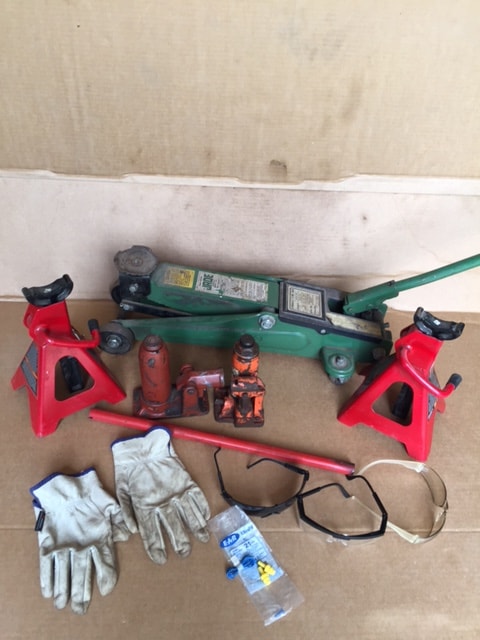
Another form of energy is gravity. The simplest, and the one most commonly found around the home and garage is jacking a car up to work on it. Most vehicles even require you to jack it up a little to change the oil nowadays. If the jack fails, and they can fail, the vehicle is coming down and can cause serious injuries, or death. Always make sure the jack is put on something solid, like the frame, and use jack stands to prevent the vehicle from falling. Jack stands can be used when working on tractors, lawnmowers and ATV’s too. Anything you can get under, be sure to block it up with jack stands!
Thermal
The last “potential energy sources” I want to mention is thermal energy. You need to shut down any heater or furnace before working on it. This could include locking out the electrical power to it or the gas.
Be sure to wear the appropriate gloves, to help prevent burns and remove any hot fluids or materials before beginning work. In most cases, I would highly recommend waiting for the equipment to cool down before beginning to work on it.
Conclusion
Don’t let this article intimidate you into not attempting your own home repairs. Replacing a garage doors spring, repairing a water faucet, or changing struts on your vehicle can easily be done by most homeowners. Just be sure to do your research, so you can get the correct parts and do it safely.
We’ve shown you a few of the potential energy sources you could potentially be working around and provided some lockout examples to get you started. And don’t forget your PPE!
But as always, if you are unsure or uncomfortable working on something, contact a professional for help. Although there are many projects a homeowner can safely do, there is no shame in asking for help. Always work safe.
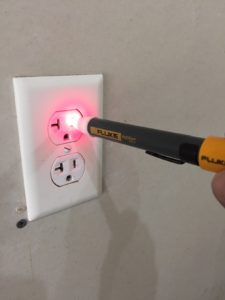
If you have any comments or questions, you can leave them in the comments section below or you can email us at [email protected]. FYI, we do not collect or share email addresses. We will only use them to reply to your comments or provide answers to your questions. We are also required to let you know that some of our links are “affiliate links”. This means if you click on a link and make a purchase, we could make a small commission, at no extra cost to you. This helps offset the cost of maintaining our website. So, if you like what you’ve seen, please be sure to give us a “Like” and “Share” on Facebook and Instagram too. Thank you for reading and good luck with all your home projects!

